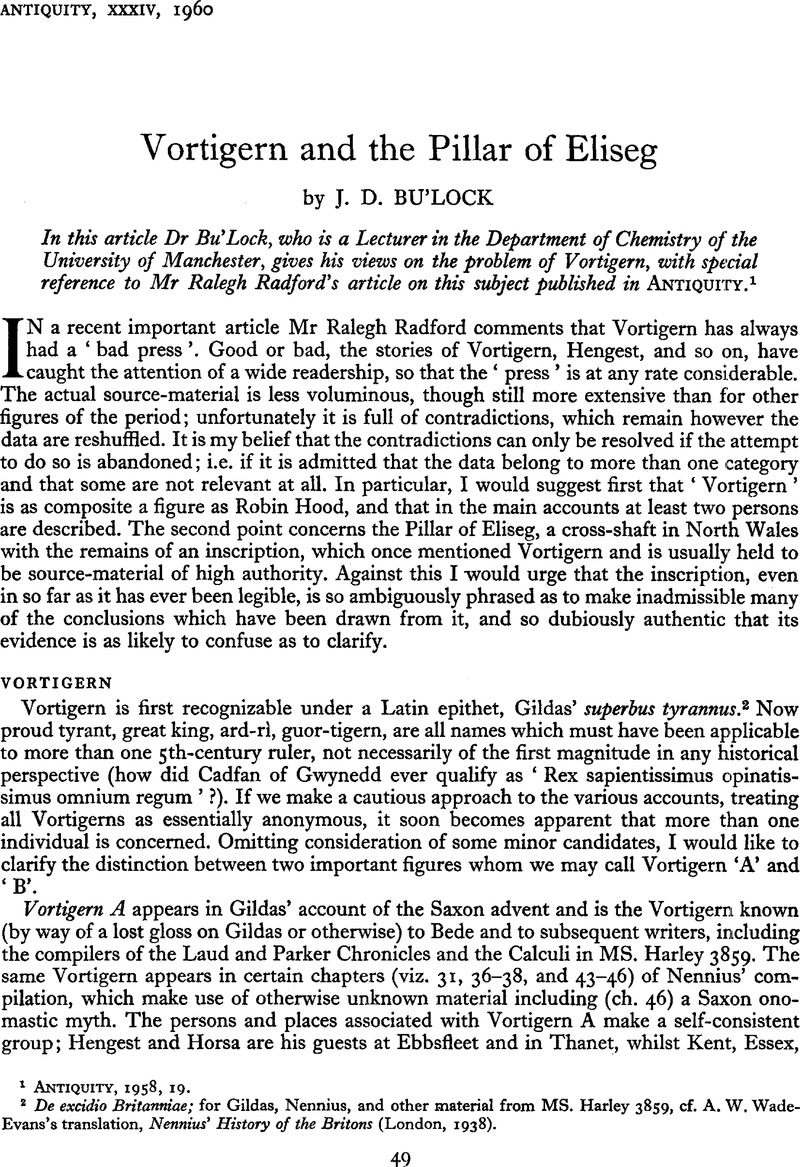Article contents
Vortigrn and the Pillar of Eliseg
Published online by Cambridge University Press: 02 January 2015
Abstract

- Type
- Research Article
- Information
- Copyright
- Copyright © Antiquity Publications Ltd 1960
References
1 ANTIQUITY, 1958, 19.
2 De excidio Britanniae; for Gildas, Nennius, and other material from MS. Harley 3859, cf. A. W. Wade-Evans’s translation, Nennius’ History of the Britons (London, 1938).
3 I. Williams, Cym. Trans. (1946-7), 44 ff., discusses the Vortigern material as a Welsh cyfarwydd, though without distinguishing between the A and B material.
4 Llwyd’s transcript is published in facsimile as part of the account by Rhŷs, Y Cymmrodor, xxi (1908), 1-62.
5 Cf. especially N. K. Chadwick (‘This is our most trustworthy authority for Vortigern and his sons and for the pedigree of the kings of Powys’) and H. M. Chadwick (‘The kings of Powys evidently claimed to be descended from Guorthigirn’), Studies in Early British History (Cambridge, 1954).
6 For Nennius and the pedigrees, cf. note (2); for Taliesin, cf. W. F. Skene, Four Ancient Books of Wales (Edinburgh, 1868), ii, p. 172.
7 Op. cit., note (5).
8 V. E. Nash-Williams, Early Christian Monuments of Wales, (Cardiff, 1950), p. 124.
9 T. D. Kendrick, Late Saxon and Viking Art (London, 1949), 68-76; also T. Pape, Trans. N. Staffs Field Club, 1945-6, p. 25.
10 Nash-Williams, op. cit., passim.
11 Op. cit.
12 Nash-Williams, op. cit., p. 41.
13 Arch. Camb., LXXXV (1930), 131.
14 Corpus Inscriptionum Insularum Celticontm, vol. II (Dublin, 1945).
15 loc. cit., note (4).
- 1
- Cited by


